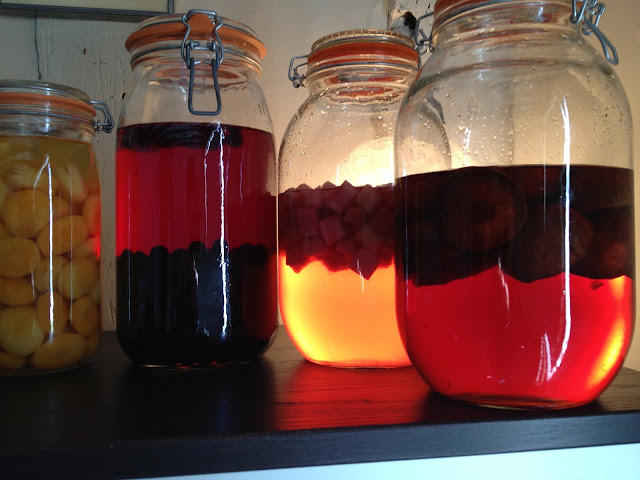Galley Slave has been making her own Sloe Gin since moving back to the UK from Australia
About 3 or 4 years ago and following some cyber chats with friends Vivia and Linda, Galley Slave switched the base spirit from gin to vodka. Vodka, with its bland flavour, seems to allow the gentle, spicy flavour of the sloes to permeate the blend far more effectively (and deliciously) than gin. Or so it seems to us anyway. Thanks for the tip, ladies! Other folk say it's also delicious when using brandy as the base spirit but Galley Slave has yet to try that. Maybe one of you lovely folk out there has tried making it that way…?
 |
| 2014's batch of Sloe Vodka - an outstanding colour. |
 |
| Bush Plum Vodka. Home made in Suffolk by Galley Slave. |
 |
| Group photo - fruit vodkas doin' their thang. Plus apricots in Sauterne. Photo: Veronica Hayes |
 |
| It looked pretty enough. |
 |
| An excellent recipe book - it's still in fruit. Photo: Veronica Hayes |
When you're ready, strain the liqueur off the fruit. Unless you don't mind some sediment and therefore a cloudy effect to your drink, pour it through some coffee filters or two layers of scalded muslin draped over a funnel when you take the liquid off the fruit. You'll get a lovely clear liquid. And remember to label your bottles. I always think I'll remember what's what. But usually forget come 6 months down the line.
 |
| Sloe Vodka 2014 after bottling. Look at that colour!! Photo: Veronica Hayes. |
Vxx
No comments:
Post a Comment